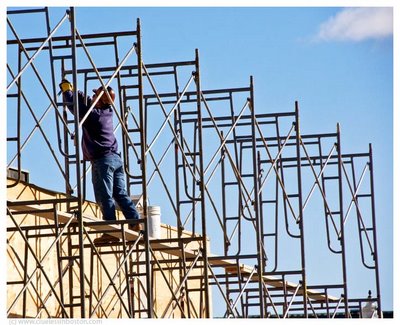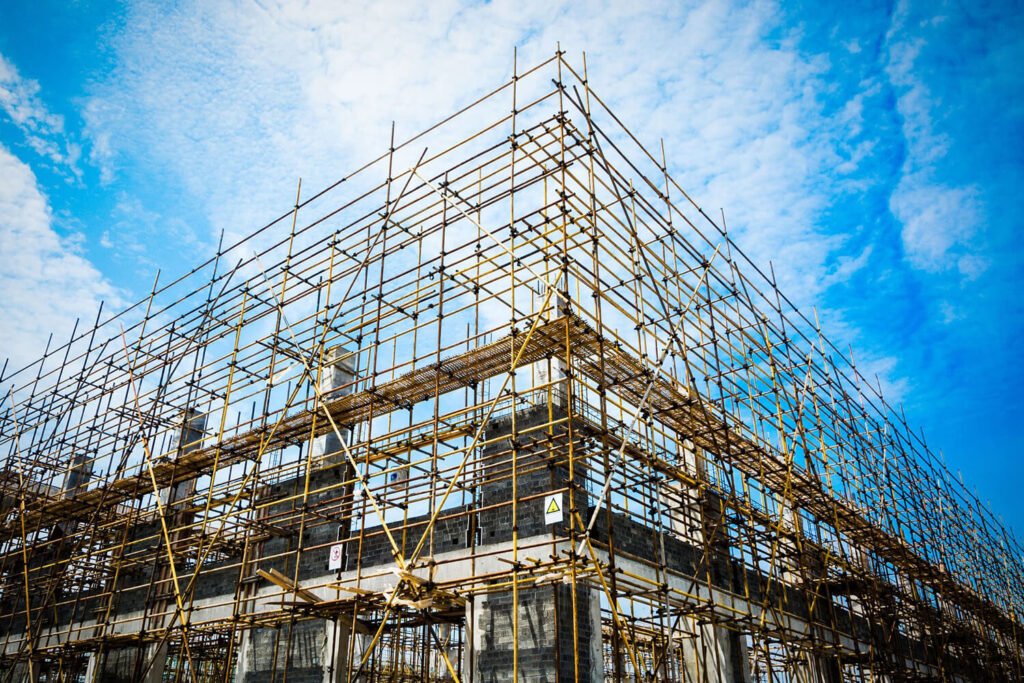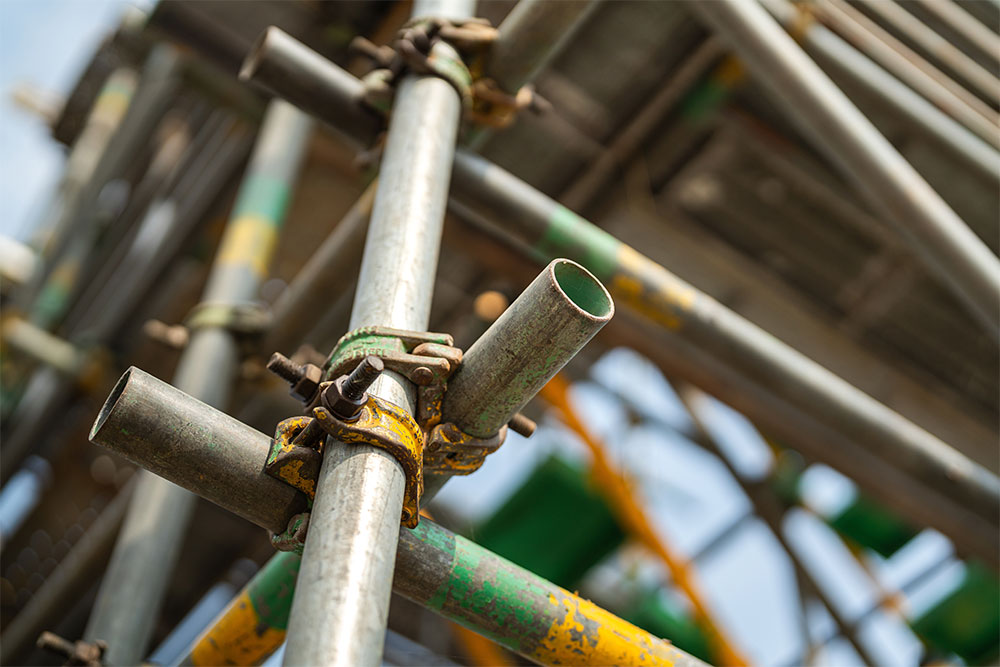Exploring the Various Sorts Of Scaffolding Made Use Of in Construction Jobs
The construction market relies heavily on various sorts of scaffolding to fulfill particular project needs, each offering unique advantages and applications. Typical framework scaffolding offers a tough foundation for basic jobs, while put on hold scaffolding is necessary for work with high-rise frameworks. Other options, such as system and rolling scaffolding, satisfy effectiveness and mobility, respectively. In addition, the cantilever variant confirms very useful in metropolitan environments where area is constricted. Understanding the subtleties of these scaffolding types is essential for enhancing safety and security and performance on building sites, motivating a better evaluation of their unique attributes and applications.

Conventional Frame Scaffolding
Standard framework scaffolding is among one of the most commonly made use of approaches in the building industry as a result of its effectiveness and versatility. This system is composed of straight and upright frameworks that are assembled to develop a steady platform for employees and materials. The major elements consist of vertical messages, horizontal journals, and angled braces, which together offer a strong structure that can support significant tons.
Among the key advantages of standard frame scaffolding is its flexibility to various building tasks, ranging from household structures to large industrial frameworks. The modular design allows for simple setting up and disassembly, making it reliable for both long-lasting and temporary jobs. Furthermore, the system can be tailored in height and size, accommodating various structure styles and website problems.
Safety and security is critical in scaffolding applications, and traditional framework systems are furnished with guardrails and toe boards to avoid drops and make sure employee defense. Normal examinations and adherence to safety and security guidelines are important in preserving the stability of the scaffold (Scaffolding). Generally, standard framework scaffolding continues to be a basic option in the building industry, supplying a trusted platform for labor and boosting general project effectiveness

Suspended Scaffolding
Suspended scaffolding provides a special option for building and construction jobs that need access to raised surface areas, specifically in circumstances where conventional framework scaffolding might be impractical. This kind of scaffolding is typically suspended from the roof covering or top degrees of a structure, using a system of platforms, ropes, and sheaves to produce a functioning room that can be adjusted to different elevations.
Among the main advantages of suspended scaffolding is its adaptability. It can be easily rearranged or decreased to accommodate modifications in construction requirements, making it perfect for tasks such as window installment, frontage job, and upkeep on skyscraper buildings. In addition, the very little footprint of put on hold scaffolding permits far better use of ground area in city atmospheres, where space is usually limited.
Security is a crucial consideration in making use of suspended scaffolding. Correct rigging and securing systems need to be utilized to make certain security and avoid crashes. Operators needs to additionally be educated in the safe usage of this tools. Overall, suspended scaffolding supplies a reliable and effective solution for accessing hard-to-reach areas in numerous construction situations, improving both efficiency and security on website.
System Scaffolding
System scaffolding, typically considered a modern remedy in the scaffolding industry, contains pre-engineered elements that can be rapidly assembled and adapted for different building jobs. Scaffolding. This sort of scaffolding is defined by its modular design, which allows for convenience and effectiveness on task sites, fitting architectural requirements and various elevations
Typically made from high-strength steel or light weight aluminum, system scaffolding offers boosted toughness and stability. The parts include upright articles, click this link horizontal journals, and angled braces, which adjoin safely, ensuring a robust structure. The style typically includes standard fittings, simplifying assembly and disassembly procedures, thereby lowering labor time and expenses.

Rolling Scaffolding
Rolling scaffolding is a versatile option to traditional set scaffolding, created for wheelchair and simplicity of usage on building sites. This kind of scaffolding contains a platform supported by frames with wheels, enabling workers to quickly relocate it as required. The mobility feature substantially boosts efficiency, as it decreases downtime related to disassembling and setting up repaired scaffolding.
Usually built from light-weight materials such as light weight aluminum or steel, rolling scaffolding provides a sturdy yet mobile service for tasks requiring regular repositioning - Scaffolding. It is particularly beneficial in tasks such as painting, drywall setup, and electric job, where access to numerous heights and areas is needed
Safety and security is extremely important in rolling scaffolding style, with features such as locking wheels to avoid unintended movement when being used, and guardrails to protect workers from drops. Additionally, several models are flexible in elevation, suiting numerous project requirements.
Cantilever Scaffolding

The design of cantilever scaffolding commonly includes using arms or brackets anchored to a structure or framework, allowing the platform to prolong outward securely. Security is critical; hence, these scaffolds need web to be crafted to hold up against different tons and ecological problems. Normal examination and maintenance are important Visit Website to make certain structural stability and worker security.
Cantilever scaffolding is preferred for its adaptability and efficient use room, making it a prominent selection in urban environments where room restrictions are usual. Furthermore, it assists in much easier accessibility to high elevations, inevitably contributing to the general effectiveness of construction jobs. As with all scaffolding types, proper training and adherence to safety and security standards are important for employees utilizing cantilever scaffolding.
Verdict
Traditional frame scaffolding offers stability, while put on hold scaffolding supplies adaptability for raised jobs. System scaffolding assists in quick assembly, and rolling scaffolding boosts wheelchair for varying job atmospheres.
Typical framework scaffolding supplies a durable structure for basic tasks, while put on hold scaffolding is essential for work on high-rise structures.Moving scaffolding is a functional option to standard fixed scaffolding, developed for flexibility and simplicity of use on building and construction websites. As with all scaffolding types, appropriate training and adherence to security requirements are important for employees making use of cantilever scaffolding.
Traditional framework scaffolding provides stability, while put on hold scaffolding provides flexibility for raised tasks. System scaffolding assists in quick assembly, and rolling scaffolding improves flexibility for varying work settings.